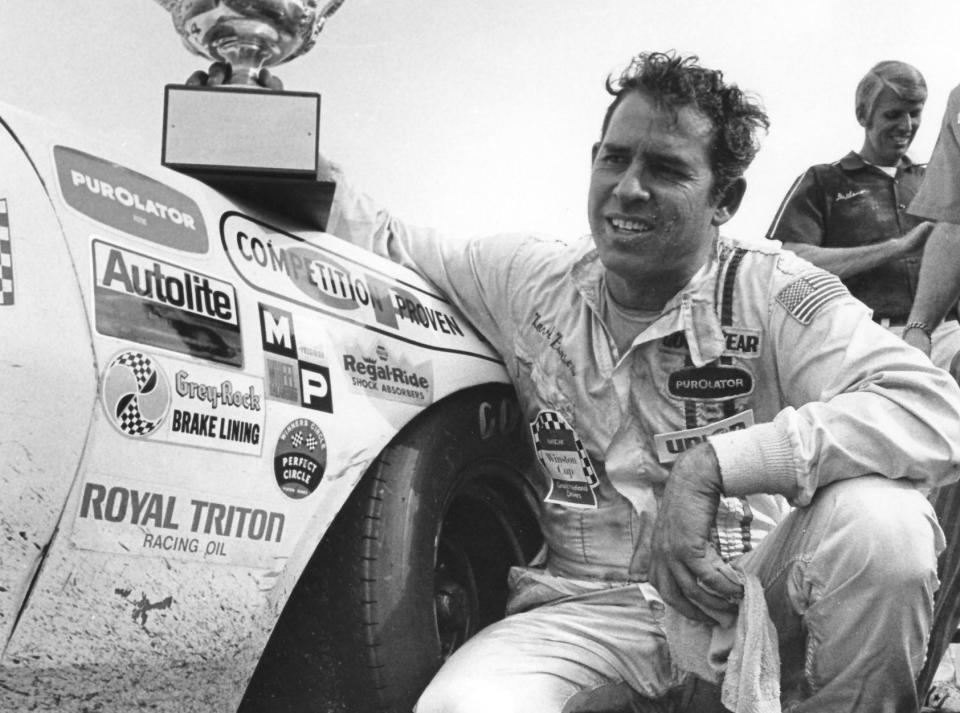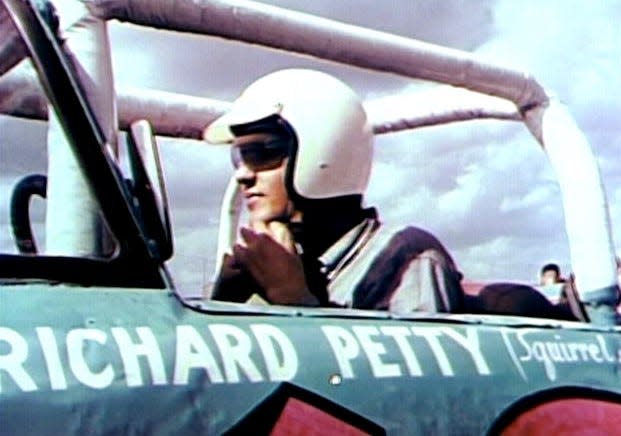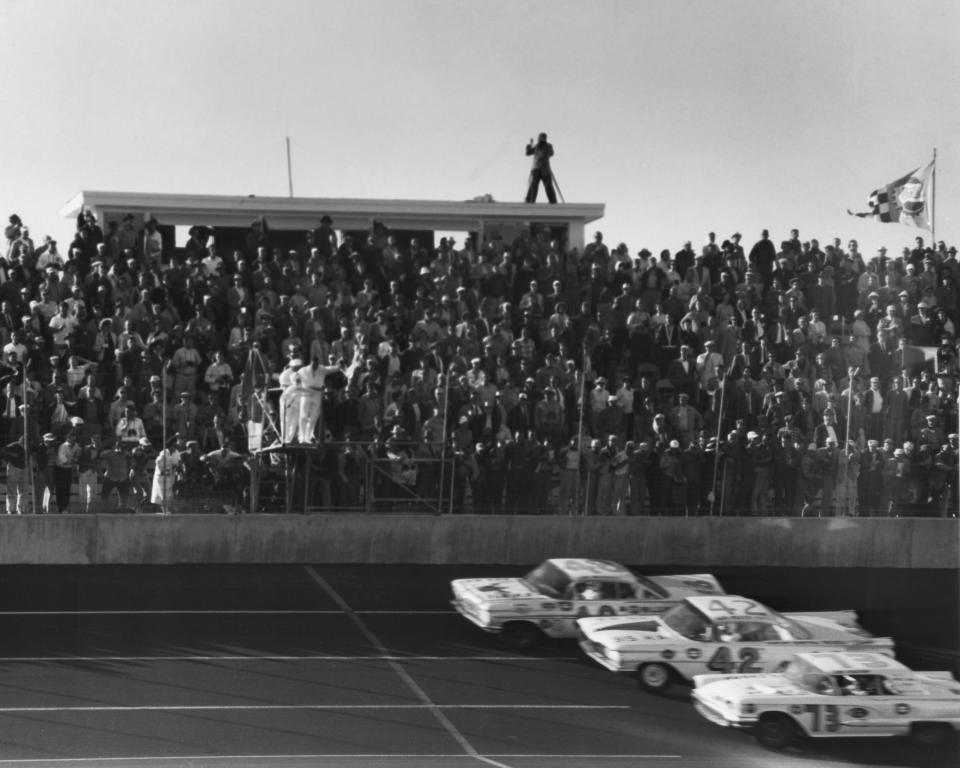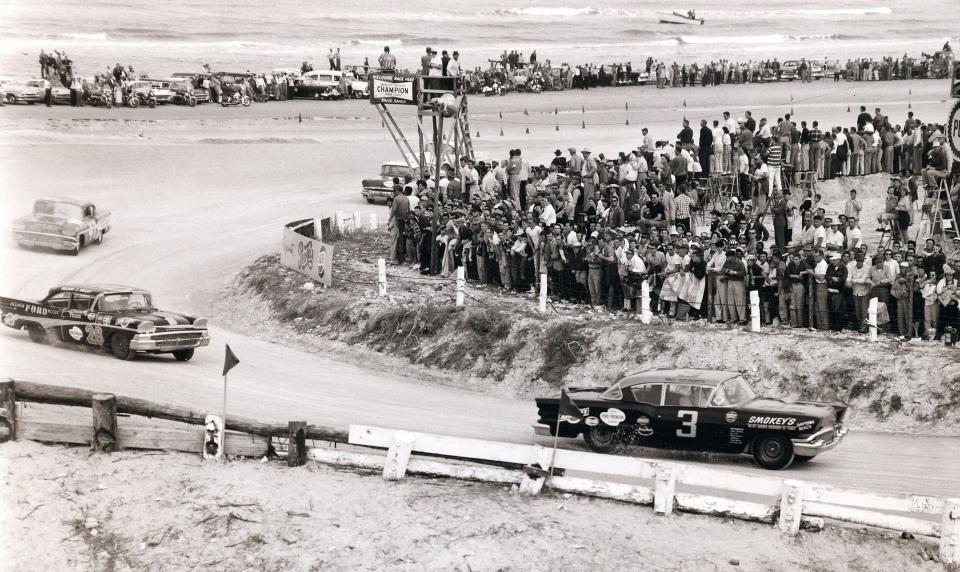NASCAR Classics really is classic NASCAR; do some time-traveling | KEN WILLIS
One man’s wormhole is another’s treasure trove.
Can it be both?
Yes, apparently, given the time devoted to (or wasted upon, depending on your angle) this new gift from NASCAR to us lifers.
That’s right, a gift from NASCAR. There have been some in recent years — the rebirth of North Wilkesboro and trying dirt at Bristol come to mind — but this one is aimed squarely at those who bemoan the "good ol’ days" as they shrink smaller and smaller in the rear-view mirror.
“NASCAR Classics,” it’s called, available at classics.nascar.com, offering more than 1,000 full replays, condensed broadcasts and filmed recaps of races dating back to NASCAR’s earliest years. Broadcasts are commercial-free, by the way.
Man oh man, it doesn’t take long to get sucked in.
There’s the great Chris Economaki interviewing David Pearson after Pearson’s second career victory, in the 1961 Firecracker 250 at Daytona.

WATKINS GLEN ODDS NASCAR Odds at Watkins Glen: Chase Elliott is back (in your gambling hearts, anyway)!
“How old are you, Dave?”
“Twenty-six.”
“Tell me about your family.”
“Two boys.”
At the beginning of that ABC Wide World of Sports broadcast, host Bill Flemming is joined by Big Bill France, who also chimes in here and there throughout the race. Video and audio of NASCAR’s founder are out there, but not in abundance, so it’s a neat moment.
There’s Bill Elliott winning the season finale at Riverside in ’83, celebrating his first career win — an unlikely win, at that, coming on the California road course — while across the way, Bobby Allison is celebrating his first (and only) Cup Series championship.
Tim Flock, before the start of the ’55 Southern 500 at Darlington, sitting on his car’s hood, eating a baloney sandwich while wearing street clothes, which also double as his racing "uniform."
Five years earlier, the first Southern 500 and all the madness of 75 cars on what now — but certainly not then — seems like a track way too small for such things.
Al Michaels calling several races for ABC. And there’s Keith Jackson, too.
Richard Petty winning his 200th race, with President Reagan watching, at Daytona in ’84, where 25 years earlier Petty’s first Daytona race ended in much different fashion.
“Car in the pits,” says the 1959 narrator. “A convertible handled by Dick Petty.”
SPEED FREAKS Chase Elliott was close at Indy, can he do it at Watkins Glen?

Back then, most Dicks were Richards, but not all Richards were Dicks, and Richard Petty would set that straight before his unmatched career gained much more ground.
In that first Daytona 500, several convertibles were in the starting lineup. They were at a horsepower disadvantage, and apparently Petty pressed the issue and blew up after just eight laps. The narrator takes note.
“Young Petty is finished, a victim of ambition.” The record books show he earned $100 for finishing 57th out of 59 starters that day.
NASCAR At Daytona
NASCAR's Xfinity and Cup Series return to Daytona International Speedway this coming weekend. Here's the on-track schedule:
Friday
3 p.m.: Xfinity Series qualifying for Wawa 250.
5:05.: Cup Series qualifying for Coke Zero Sugar 400.
7:30: Wawa 250 (USA Network).
Saturday
7 p.m.: Coke Zero Sugar 400 (NBC).
Next to Petty’s name on the driver’s door, you see this: (Squirrel Jr.). Turns out, in his earliest days, the second-generation racer was a bit loosey-goosey in the turns.
Later in that filmed recap, you see the final lap, with Johnny Beauchamp and Lee Petty crossing the stripe side by side. It was a few days before Petty was officially given the victory.

Beauchamp was originally declared the winner, and there he is in Victory Lane, getting a hug and kiss from the Speedway’s beauty queen, then going back for more … with gusto.
Downright uncomfortable, gotta say.
But so far, without doubt, the greatest gem comes from footage and narration of the last race on Daytona’s beach-and-road course. Talk about an archeological find: Near the beginning of the 12-minute film, you get footage from Smokey Yunick’s old Daytona Beach garage, where Smokey and Ralph Johnson are prepping the eventual winning car, driven by Paul Goldsmith.
Over the years, we’ve heard stories about Smokey (as well as Ray Fox and Marshall Teague, two other local racers of the day) testing their horsepower on the public streets, most notably the section of North Beach Street north of Granada in Ormond Beach, through the canopy of trees, past Tomoka State Park and toward the Loop, at roughly 140 mph.

It’s a section of road where many a young man took many a young woman on nighttime drives under that canopy, with the moon flashing through the branches and providing quite the mood-enhancing vibe.
Smokey, Lord knows, wasn’t against such things, but his heart was set on straight-line speed, and we now have available footage. It’s rather amazing.
We then get Goldsmith, with in-car camera (quite cutting edge for 1958), taking viewers on a lap around the beach-and-road course.
“You have a tendency to fish-tail and spin, all the way up the beach to the north turn,” Goldy says, before the car navigates the turn, gains grip on the asphalt of South Atlantic Avenue, and climbs to 140+ mph, which doesn’t sound like much today, but given the circumstances …
“Several spots, all four wheels will leave the ground,” Goldy says. “That’s how rough it is going through there. There’s one point, I’d say, all four wheels must be six inches in the air.”
In race mode, this is happening with spectators literally standing some 8-10 feet from the racing traffic. Unreal. But real, apparently. See for yourself.
An entirely different form of scary can be found in the flag-to-flag Fox coverage (yes, commercial-free) of the 2012 Daytona 500.
Juan Montoya’s unfortunate crash into the jet dryer, and all those flames, can be lived again in real time, and while the ensuing 11 years might’ve dulled the memories, revisiting that scene reminds you how damn lucky everyone was that it didn’t turn out much worse.
A lot of these things, maybe even most, could probably be found if you went searching hard enough. But with NASCAR Classics, it’s all right there and, frankly, as user-friendly as anything you’ll find.
You can search by year or you can search by track (from Langhorne Speedway to Japan’s Twin Ring Motegi), and each race includes a “timeline” icon that’ll take you to important parts of the broadcast.
Again, they tell us it includes more than 1,000 past races, and in darting around the site, that seems true. So far, it appears there are no races involving a fatality — you don’t see the 1964 World 600 at Charlotte (Fireball Roberts), 1964 Riverside (Joe Weatherly), 1991 Watkins Glen (J.D. McDuffie) or the 2001 Daytona 500 (Dale Earnhardt), among others.
You can obviously make the case that the right decision was made on this.
But overall, there’s enough there to convince you, yes, things were much better in earlier times, but also, at times, not so much.
It’s an absolute treasure trove and, if nothing else, you now have something to watch during the next rain delay.
— Reach Ken Willis at ken.willis@news-jrnl.com
This article originally appeared on The Daytona Beach News-Journal: NASCAR Classics: From 'Dick' Petty to the beach, it's truly classic

